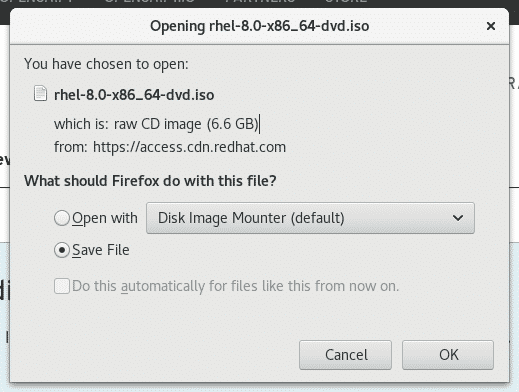

- Red hat linux iso image for virtualbox install#
- Red hat linux iso image for virtualbox full#
- Red hat linux iso image for virtualbox code#
- Red hat linux iso image for virtualbox license#
- Red hat linux iso image for virtualbox series#
Red Hat renamed their Red Hat Linux brand as Red Hat Enterprise Linux (RHEL) commencing 2003. Several versions followed until the last version in the series, Red Hat Linux 9 (later referred to as RHEL 3), based on kernel 2.4.20, was released in March 2003. The company released the first version 1.0 in November 1994.
Red hat linux iso image for virtualbox code#
Red Hat, Inc., founded in 1993, used the available Linux source code and created one of the first commercial Linux operating system distribution called Red Hat Linux (RHL).
Red hat linux iso image for virtualbox full#
The Linux kernel, and the operating system in general, has been enhanced with contributions from tens of thousands of software programmers, amateurs, and organizations around the world into a large and complex system under GNU GPL, which provides public access to its source code free of charge and with full consent to amend, package, and redistribute. At the time of this writing, version 4.19, with its millions of lines of code, is the latest stable kernel. Development and enhancements continued, and version 4.0 was followed by several stable versions.
Red hat linux iso image for virtualbox series#
In 1994, the first major release (1.0.0) was introduced, followed by a series of successive major and minor versions until the version 4.0 in 2015. Initially written to run on Intel x86-based computers, the first version (0.01) was released in September 1991 with little more than 10,000 lines of code.
Red hat linux iso image for virtualbox license#
Linux was released under the GNU General Public License (GPL). The new kernel was named Linux, and it was gradually integrated with the GNU software to form what is now referred to as GNU/Linux, Linux operating system, or simply Linux. The only critical piece missing was a core software component called kernel to drive and control the GNU software and to regulate its communication with the hardware.Īround the same time, Finnish computer science student Linus Torvalds developed a kernel and proclaimed its availability. The initiative was called the GNU Project ( GNU’s Not Unix) and by 1991, significant software had been developed. In 1984, Richard Stallman, an American software engineer, had a goal to create a completely free UNIX-compatible open source (non-proprietary) operating system. Linux deployment and usage are constantly on the rise. Linux is largely used in government agencies, corporate businesses, academic institutions, scientific organizations, as well as in home computers. At present, over one hundred different Linux distributions are circulating from various vendors, organizations, non-profit groups, and individuals, though only a few of them are popular and widely recognized.

Linux is the main alternative to proprietary UNIX and Windows operating systems because of its functionality, adaptability, portability, and cost-effectiveness. Numerous vendors, including Red Hat, IBM, Canonical, Oracle, DXC Technology, Novell, and Dell, offer commercial support to Linux users worldwide.

Linux also runs as the base OS on networking, storage, gaming, smart television, and mobile devices. Linux powers an extensive range of computer hardware platforms, from laptop and desktop computers to massive mainframes and supercomputers. It is referred to as a UNIX-like operating system. Linux is a free computer operating system (OS) that is similar to the UNIX OS in terms of concepts, features, functionality, and stability. Once the operating system is installed, users can log in at the console or over the network.
Red hat linux iso image for virtualbox install#
The install process requires careful planning to identify critical system configuration pieces prior to launching the installer program. A lab environment is necessary to practice the procedures to solidify the understanding of the concepts and tools learned. It is available as a single installable image file. Red Hat Enterprise Linux may be downloaded for learning, practicing, and preparing for the RHCSA exam. It is stable, robust, feature-rich, and is ready to host workload of any size. This distribution is thoroughly tested to run smoothly and perform well on a wide range of computer hardware platforms. The company packages the updated version as a Linux distribution of their own for commercial purposes. modifies a copy of a selected version of Linux source code and introduces features, adds improvements, and fixes bugs. Its source code is available to developers, amateurs, and general public for enhancements and customization. Linux is a free operating system and it has been in existence for almost three decades.

This chapter sets up the foundation for learning and practicing the exam objectives for RHCSA Log in and out at over the network RHCSA Objectives: Recommended lab setup for RHCSA exam preparationĭownload and install Red Hat Enterprise Linux 8 in virtual machineĮxecute post-installation configuration tasks Chapter 01 Local Installation This chapter describes the following major topics:


 0 kommentar(er)
0 kommentar(er)
